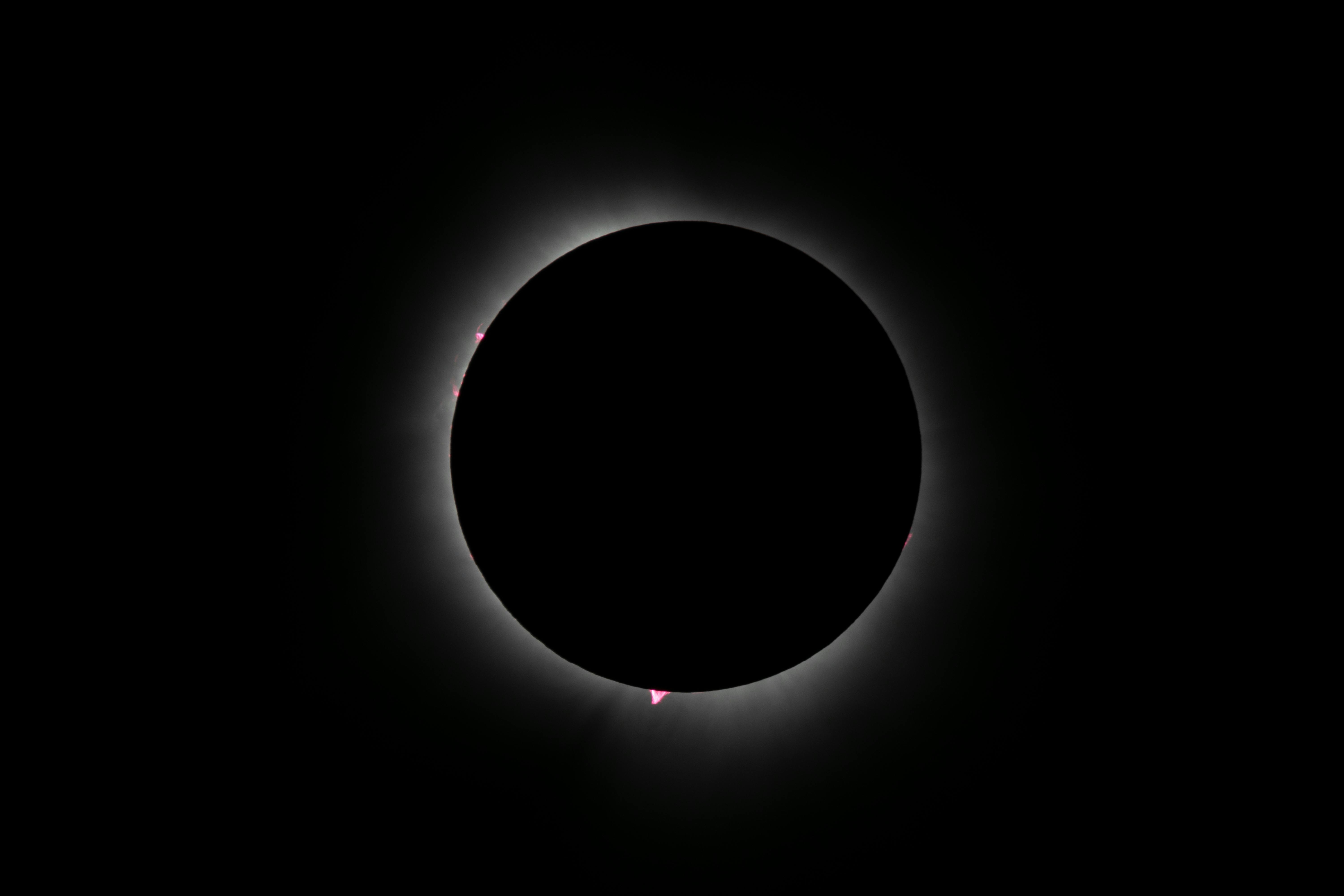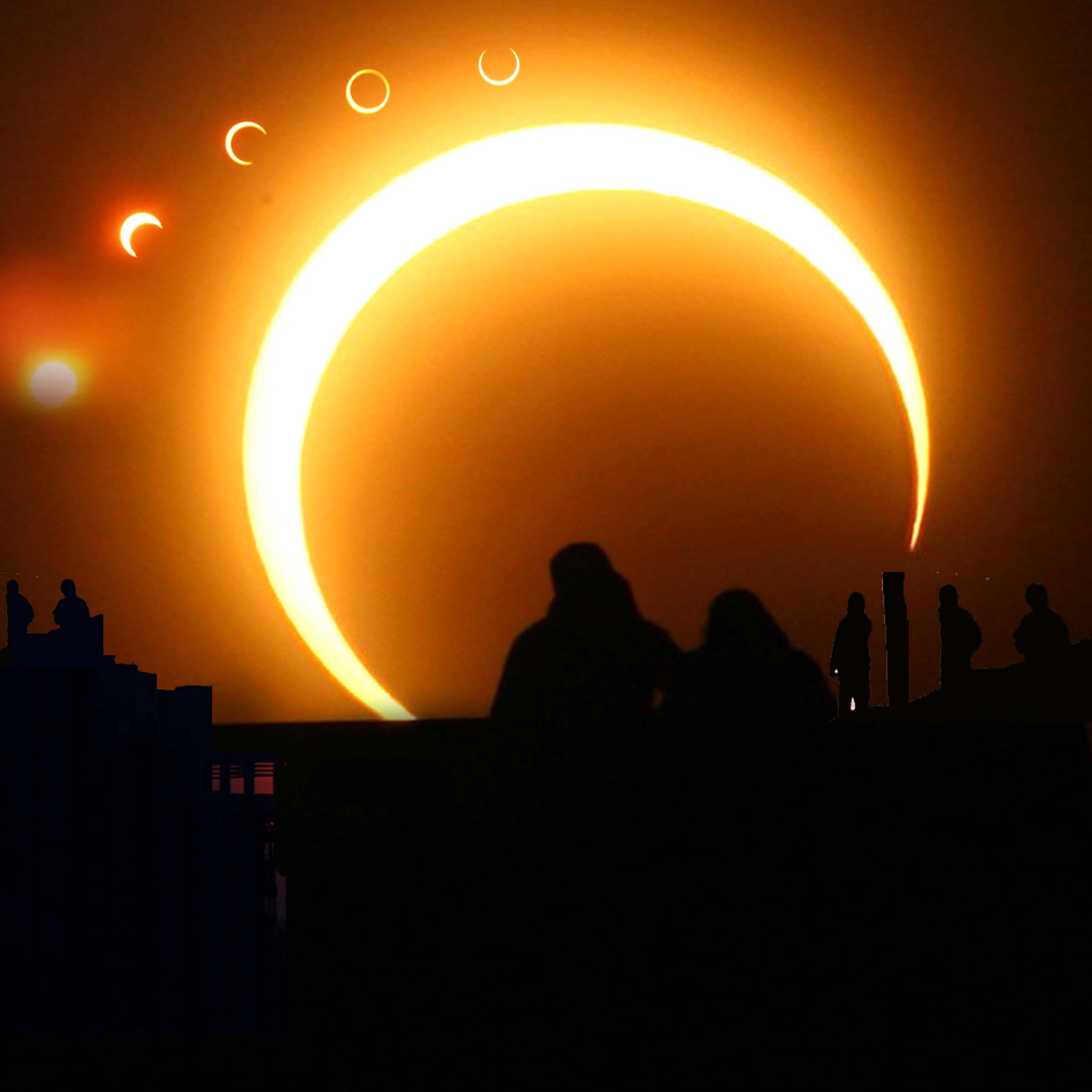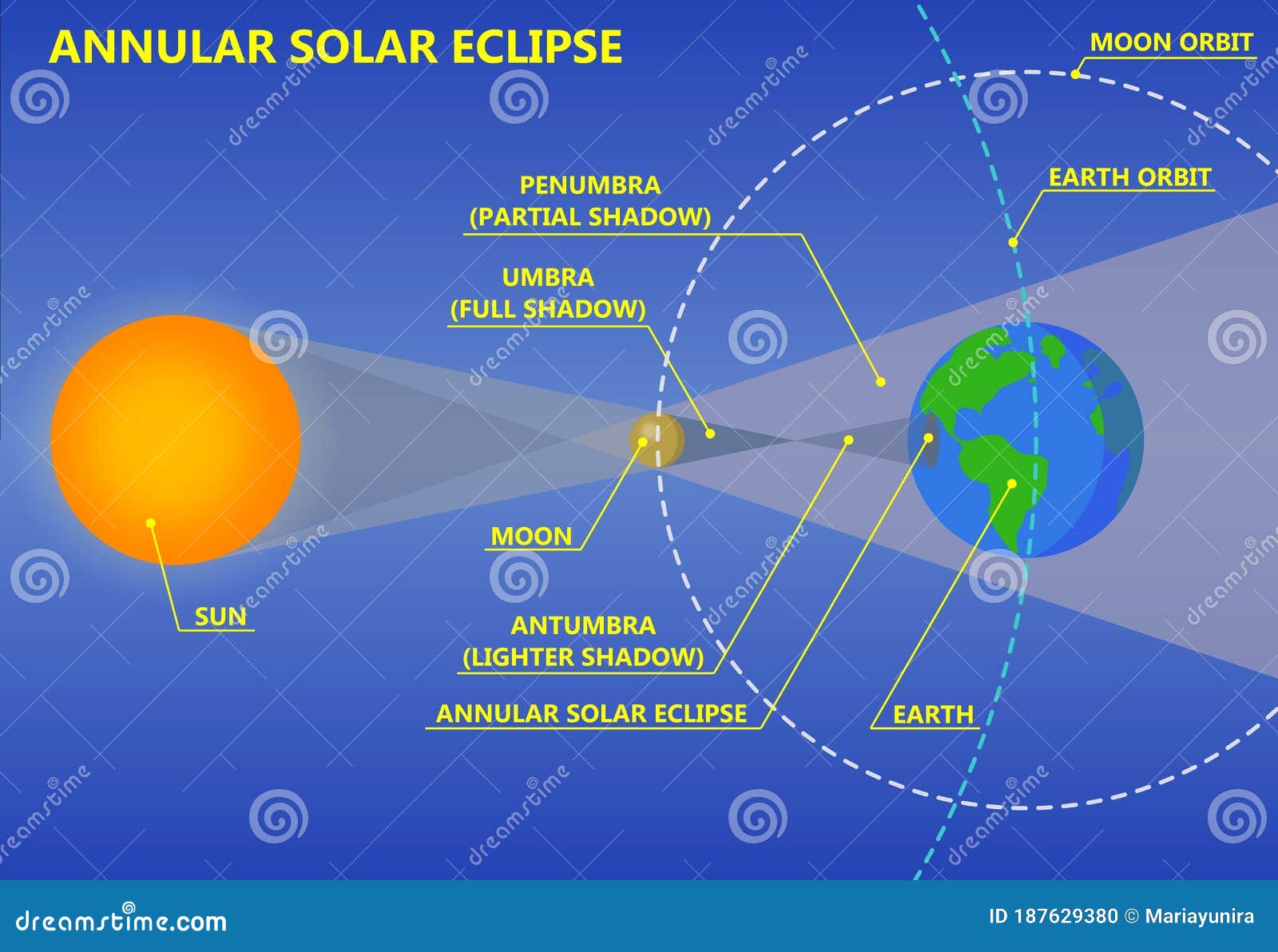Exploring The Mysteries Of Annular Solar Eclipse: A Celestial Phenomenon You Can't Miss
Hey there, space enthusiasts! Let's dive straight into something truly out of this world—an annular solar eclipse. Imagine this: the sun, moon, and Earth aligning perfectly in a cosmic dance that leaves us in awe. But here's the kicker—an annular solar eclipse isn't just any eclipse. It's a rare and mesmerizing event where the moon covers the sun's center, leaving a glowing ring of fire around its edges. Cool, right? So, buckle up as we explore the science, history, and significance of this celestial wonder.
Now, you might be wondering—what makes an annular solar eclipse so special? Unlike a total solar eclipse, where the moon completely blocks the sun, an annular eclipse occurs when the moon is farther away from Earth, making it appear smaller in the sky. This creates that stunning "ring of fire" effect that has captivated astronomers and stargazers for centuries. Whether you're a seasoned space buff or just curious about the universe, this phenomenon is worth understanding.
Let's face it—space is vast, mysterious, and full of surprises. And annular solar eclipses are one of those surprises that remind us how small we are in the grand scheme of things. But don't worry; we're here to break it down for you. From the science behind it to the best ways to witness it, we've got you covered. So, grab your eclipse glasses and let's get started!
- Daphne Smith Sampson The Inspiring Journey Of A Trailblazing Woman
- Hdmovies4uws Your Ultimate Destination For Premium Movie Experiences
What Exactly is an Annular Solar Eclipse?
An annular solar eclipse happens when the moon passes directly between the Earth and the sun, but it's a bit different from the usual total solar eclipse. Picture this—the moon is at its farthest point from Earth during its orbit, making it appear smaller in the sky. As a result, it doesn't fully cover the sun, leaving a bright ring of sunlight visible around the edges. This "ring of fire" is what makes annular eclipses so unique and breathtaking.
Key Characteristics:
- The moon is farther from Earth during an annular eclipse, creating a smaller apparent size.
- A bright ring of sunlight, known as the "ring of fire," surrounds the moon.
- It's a rare event that occurs only when the moon, Earth, and sun align perfectly in a specific way.
Understanding the mechanics of an annular solar eclipse is like solving a cosmic puzzle. The moon's orbit around Earth isn't a perfect circle—it's elliptical. This means the moon's distance from Earth varies throughout its orbit. When an eclipse happens during the moon's apogee (the farthest point from Earth), we get an annular eclipse instead of a total one.
- Why Vegha Movie Is The Hottest Ticket In Town Right Now
- Why David Spade Trump Supporter Stance Has The World Talking
How Often Do Annular Solar Eclipses Occur?
You might think eclipses happen all the time, but annular solar eclipses are actually quite rare. On average, they occur once every 18 months or so, depending on the alignment of celestial bodies. But here's the thing—not everyone on Earth gets to witness them. The path of visibility is usually narrow, meaning only a select few regions are lucky enough to experience the full effect of the "ring of fire."
Fun fact: Annular eclipses are part of a larger cycle called the Saros cycle, which repeats every 18 years, 11 days, and 8 hours. This cycle helps astronomers predict when and where future eclipses will occur. So, if you miss one, you can always mark your calendar for the next one!
Historical Significance of Annular Solar Eclipses
Throughout history, annular solar eclipses have been both feared and revered. Ancient civilizations often viewed them as omens or signs from the gods. For example, in Chinese mythology, it was believed that a celestial dragon was devouring the sun during an eclipse. Meanwhile, in Hindu mythology, the god Rahu was said to cause eclipses by swallowing the sun or moon.
As science advanced, humans began to understand the true nature of eclipses. Astronomers like Edmond Halley were among the first to accurately predict an eclipse in 1715, marking a significant milestone in our understanding of celestial mechanics. Today, annular solar eclipses are celebrated as natural wonders that inspire curiosity and wonder about the universe.
Notable Annular Solar Eclipses in History
Here are a few annular solar eclipses that left a lasting impression:
- 1984 Annular Eclipse: Visible across parts of Africa, this eclipse was one of the first to be extensively documented with modern photography.
- 2012 Annular Eclipse: Known as the "Ring of Fire" eclipse, it passed through parts of the western United States and Asia, drawing thousands of spectators.
- 2023 Annular Eclipse: This recent event was visible in Southeast Asia, Australia, and the Pacific Ocean, captivating millions around the world.
How to Safely Observe an Annular Solar Eclipse
Now that we know what an annular solar eclipse is and how special it is, let's talk about how to observe it safely. Looking directly at the sun, even during an eclipse, can cause serious eye damage. That's why it's crucial to use proper protective gear, such as eclipse glasses or solar filters.
Here are some tips for safe viewing:
- Wear ISO-certified eclipse glasses to protect your eyes from harmful UV rays.
- Use a solar filter on your camera, telescope, or binoculars if you're planning to take photos.
- Avoid looking at the sun through regular sunglasses or unfiltered optics—they won't provide adequate protection.
And remember, safety first! Your eyes are precious, and an annular solar eclipse isn't worth risking your vision over.
Science Behind Annular Solar Eclipses
Let's dive a bit deeper into the science behind annular solar eclipses. The key lies in the moon's orbit and its varying distance from Earth. The moon follows an elliptical path, which means its distance from Earth changes throughout its orbit. When the moon is at its farthest point (apogee), it appears smaller in the sky, leading to an annular eclipse when it aligns with the sun.
The math behind this phenomenon involves some complex calculations, but here's a simplified version: the moon's apparent size in the sky is determined by its distance from Earth. During an annular eclipse, the moon's apparent size is about 97% of the sun's, leaving that iconic "ring of fire" visible to observers.
Why Does the "Ring of Fire" Appear?
The "ring of fire" is essentially the sun's outer layers, known as the corona, shining brightly around the moon's edges. This happens because the moon doesn't completely cover the sun, leaving a thin ring of sunlight visible. The corona is usually invisible to the naked eye, but during an annular eclipse, it becomes a stunning feature of the event.
Cultural Impact of Annular Solar Eclipses
An annular solar eclipse isn't just a scientific phenomenon—it's also a cultural event that brings people together. From ancient myths to modern celebrations, eclipses have played a significant role in human history. In many cultures, they're seen as opportunities for reflection, renewal, and connection with the natural world.
Today, annular solar eclipses are often celebrated with festivals, educational events, and community gatherings. They inspire creativity, spark curiosity, and remind us of our place in the universe. Whether you're watching from a city park or a remote mountain top, there's something magical about witnessing this celestial event.
Annular Eclipses in Modern Pop Culture
Annular solar eclipses have also made their way into pop culture. Movies, books, and even music have been inspired by these awe-inspiring events. For example, the 2017 total solar eclipse in the United States sparked a wave of artistic expression, with countless songs, poems, and artworks dedicated to the phenomenon.
Future Annular Solar Eclipses to Watch Out For
So, when's the next annular solar eclipse? Lucky for you, there are plenty more on the horizon. Here are a few upcoming events to mark on your calendar:
- April 20, 2023: Visible in Southeast Asia, Australia, and the Pacific Ocean.
- October 14, 2023: Passing through parts of North America, Central America, and South America.
- February 17, 2024: Visible in parts of Antarctica and the Southern Ocean.
Keep an eye on these dates and start planning your eclipse-viewing adventure. Who knows—you might just witness the "ring of fire" firsthand!
Conclusion: Embrace the Wonder of Annular Solar Eclipses
In conclusion, annular solar eclipses are more than just scientific phenomena—they're moments of pure magic that remind us of the universe's vastness and beauty. From their historical significance to their cultural impact, these events have shaped human understanding of the cosmos for centuries. Whether you're a seasoned astronomer or a curious observer, there's something for everyone to enjoy during an annular eclipse.
So, what are you waiting for? Grab your eclipse glasses, find a good spot, and get ready to witness one of nature's most breathtaking spectacles. And don't forget to share your experience with others—after all, the more people who appreciate the wonders of the universe, the better!
Call to Action: Leave a comment below sharing your favorite annular solar eclipse experience or check out our other articles on space and astronomy. Happy stargazing!
Table of Contents
What Exactly is an Annular Solar Eclipse?
How Often Do Annular Solar Eclipses Occur?
Historical Significance of Annular Solar Eclipses
Notable Annular Solar Eclipses in History
How to Safely Observe an Annular Solar Eclipse
Science Behind Annular Solar Eclipses
Cultural Impact of Annular Solar Eclipses
Future Annular Solar Eclipses to Watch Out For
Conclusion: Embrace the Wonder of Annular Solar Eclipses
- 9xmoviesin 2024 Your Ultimate Guide To Streaming Movies Safely And Legally
- Why David Spade Trump Supporter Stance Has The World Talking

Annular Solar Eclipse · Free Stock Photo

Annular Solar Eclipse

Annular Solar Eclipse Illustration. Science Graphics. Stock Vector